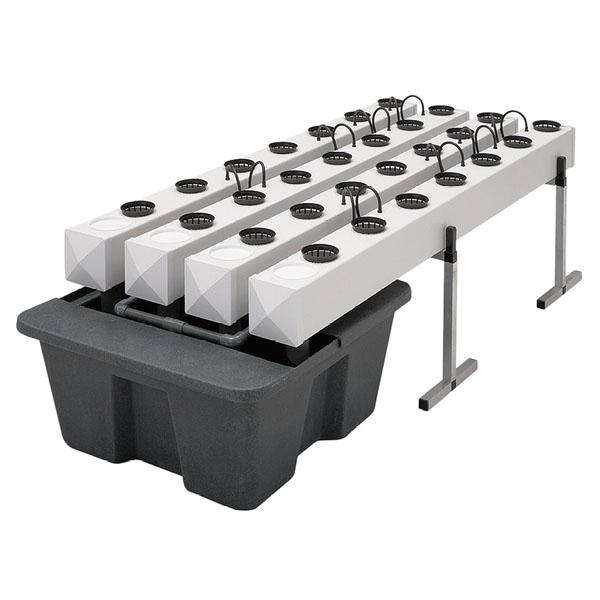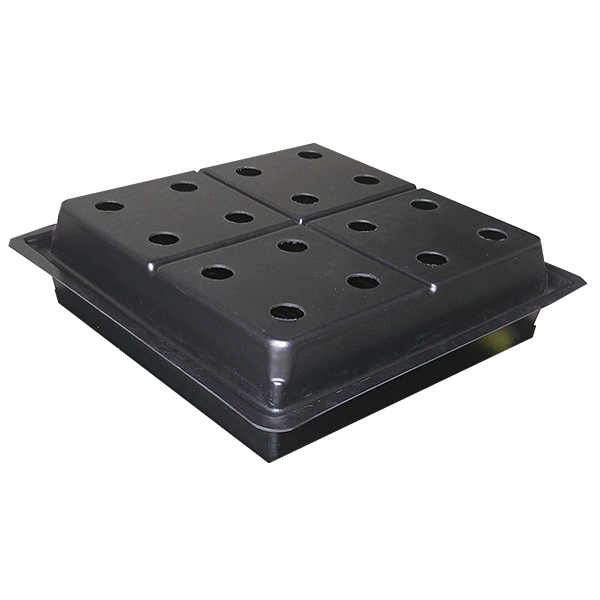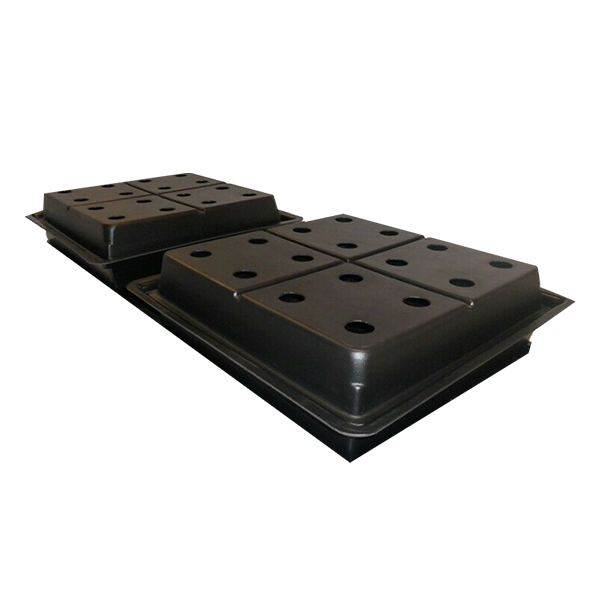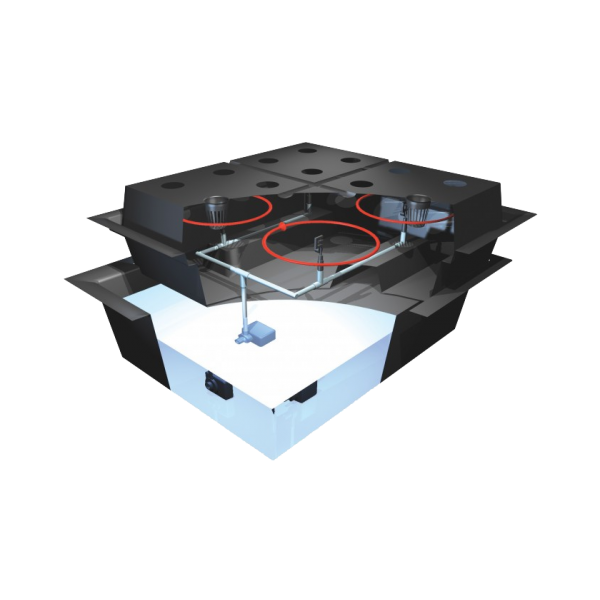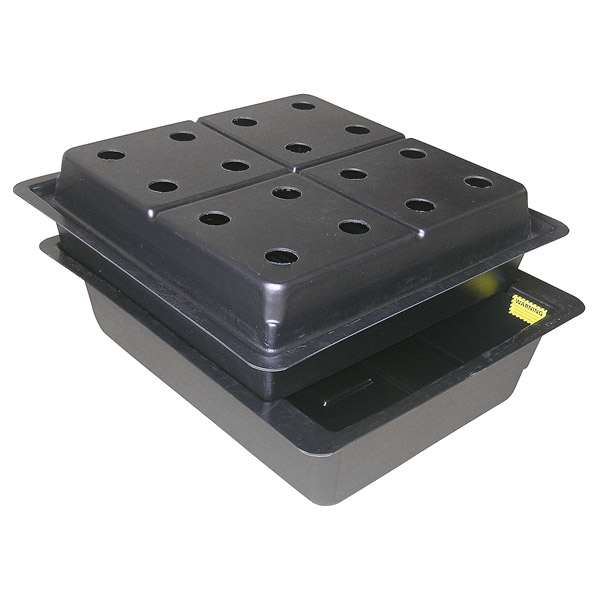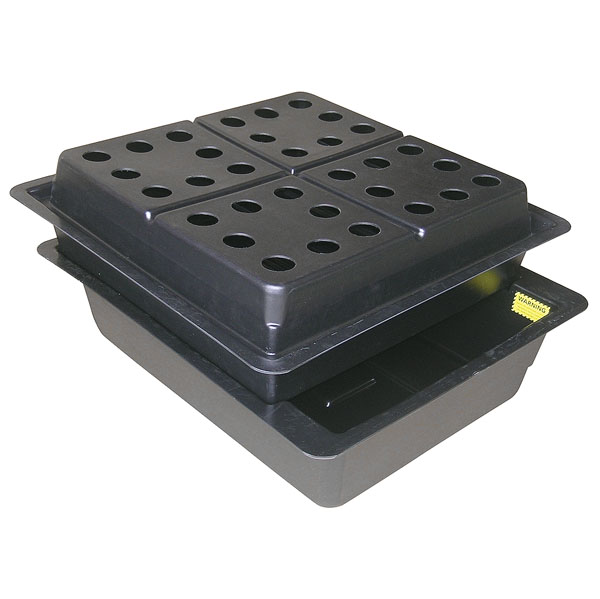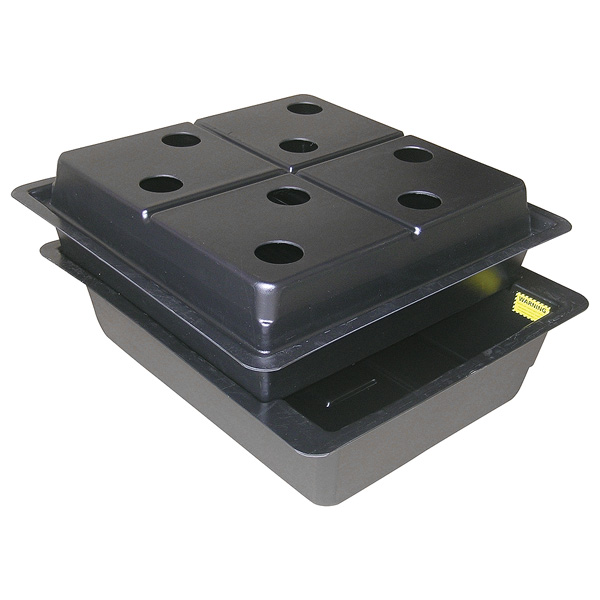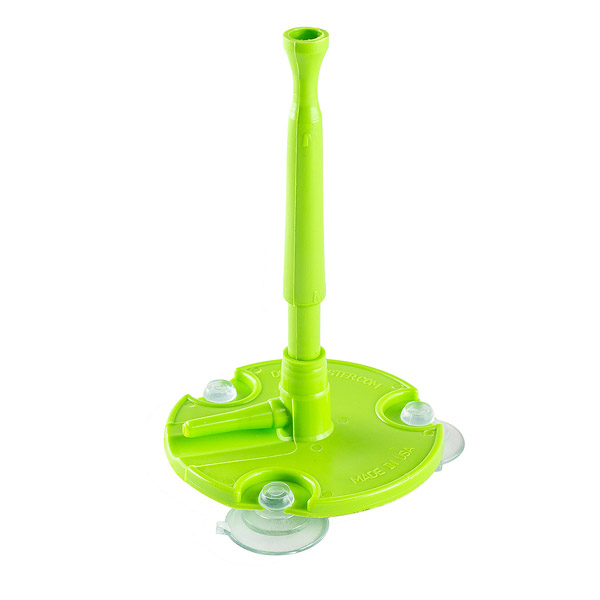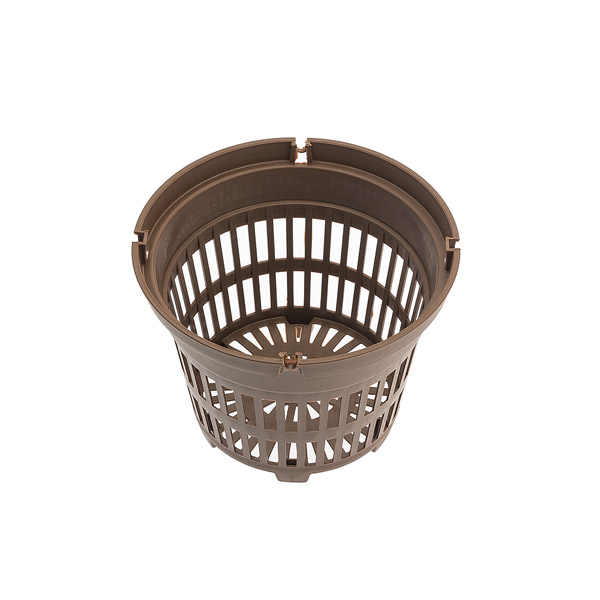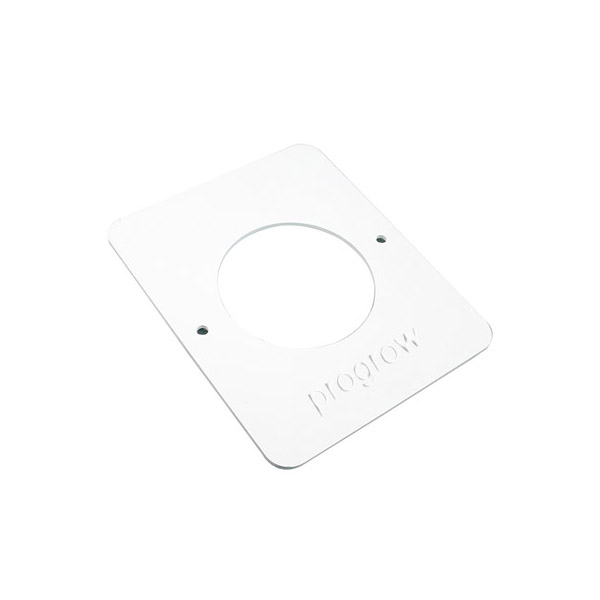Of all the methods of indoor Horticulture, Aeroponics is considered the most technical. Plants are suspended around the stem via a foam collar so as the roots of the plant are suspended in a closed environment. The roots are misted by atomised or sprayed nutrient rich solution at regular intervals, the canopy of the plant is often suspended above due to lack of plant stability from the roots.
One of the main advantages of an Aeroponic system is the availability of Oxygen and Co2 at the rhizosphere (root zone), it was found by Soffer and Burger [Soffer et al., 1988] during their studies using a 3 tier Hydroponic system how well roots respond to a misted environment. They devised a system that allowed the ends of the roots to be submerged whilst above the roots were suspended in a misted chamber with the upper section of root provided just air. They discovered that the misted sections always showed the largest number and length of roots. Nasa have conducted many experiments with Aeroponics, this is a clear indicator of its performance, an Aeroponic system will typically use less water and less nutrient solution that other methods of Hydroponics. Nasa provided the research that determines the best size for atomised droplets in an Aeroponic system at between 5-50 micrometers. This droplet size is key to optimum performance of plants in an Aeroponic system. Pumps, misters or atomisers to produce a droplet size between 5-50 micrometers present a large initial set up cost and as such are typically only used for the most productive of crops or specimen plants.
Progrow supply systems that utilise the Aeroponic method from General Hydroponics Europe and Nutriculture, both manufacturers employ different methods of nutrient solution delivery. General Hydroponics Europe excellent Aeroflo systems utilise high pressure pumps to inject water into a channel at the root zone, the depth of the water at the root zone can be adjusted as the plants grow. This provides a steady ‘streamʼ of super oxygenated nutrient solution at the rhizosphere, the result is incredibly fast vigorous plant growth. Nutricultureʼs Amazon system pumps nutrient solution from the reservoir tank to spray heads that permanently mist the roots in the chamber, excess is then drained back into the reservoir tank. Progrow recommends the use of Aeroponic propagators with these systems as it simply makes transplanting that much easier. The lack of growth media is a distinct advantage of Aeroponics over soilless media methods of Hydroponics, aeroponic cuttings are typically placed in a neoprene collar which fit into mesh pots with the roots suspended below the mesh pot, alternatively a small amount of clay pebble is used in a 1 inch mesh pot. Once cuttings have rooted they can be very simply transplanted to the Aeroponic system. Aeroponic systems remain typically disease free because pathogens find such oxygen rich environments difficult to colonise, this enables high numbers of plants to be grown together, or sea of green method. Should a plant become diseased in an Aeroponic system it is easily removed without disrupting or affecting other plants in the system. Aeroponics presents very few disadvantages although they must be listed as a tendency for drippers or emitters to block, easily rectified by good management and also having spares on hand. Due to the exposure of the roots a failure of the system whether pump or blockage can mean a crop loss very quickly, this can also be rectified by the use of a backup pump or alternative watering supply should a failure occur.
As with all indoor Horticulture the cleaner and more sterile your grow room the less chance of your plants being affected by disease pathogens, regular monitoring of the nutrient solution and regular tank changes in re-circulating systems are incredibly important to the health of plants in an Aeroponic systems.

